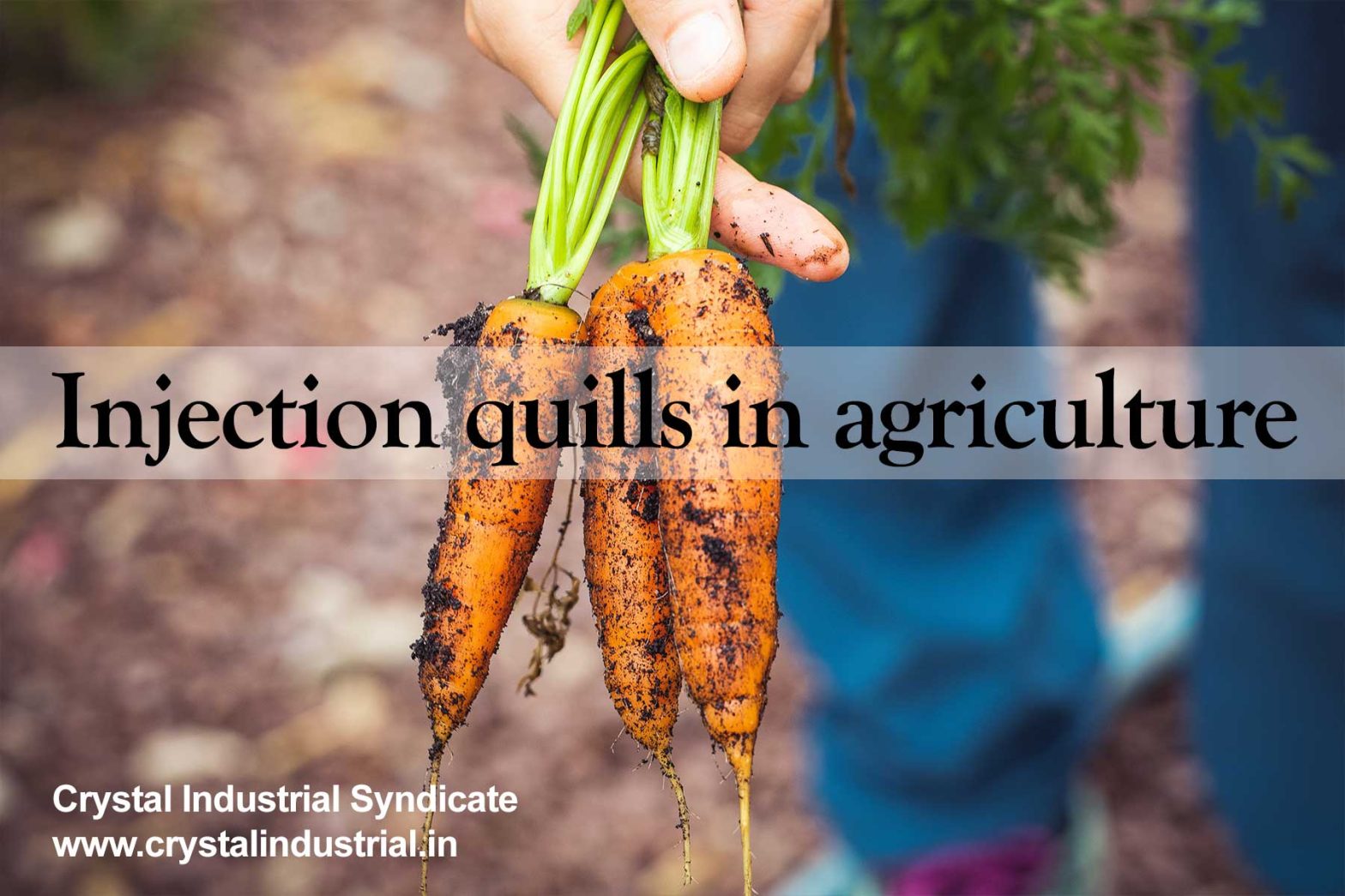Overview of the use of injection quills in agriculture and crop spraying
Injection quills are devices that are used to inject liquid fertilizers, pesticides, and other chemicals into the soil in agriculture. They are often attached to a crop spraying machine and are used to deliver the chemicals directly to the roots of the plants, which can help to improve their absorption and effectiveness. Injection quills can be used to apply a variety of different chemicals, including fertilizers, pesticides, and herbicides, and they can be adjusted to deliver different volumes of liquid depending on the needs of the plants. They are useful in situations where precise application of the chemicals is needed, such as in precision agriculture.
Advantages of using injection quills for agriculture and crop spraying
A. Improved precision and accuracy of chemical application
Injection quills improve the precision and accuracy of chemical application in agriculture by delivering the chemicals directly to the roots of the plants, rather than just spraying them on the surface of the soil. By injecting the chemicals into the soil, the plants are able to absorb them more efficiently, which can lead to better results and less waste.
Injection quills also allow for precise control of the amount of chemical that is applied. They can be adjusted to deliver different volumes of liquid depending on the needs of the plants, which can help to ensure that the correct amount of chemical is applied without over- or under-application. This is particularly important when using chemicals that can be harmful if used in excessive amounts.
Additionally, injection quills can be used in conjunction with GPS technology and other precision agriculture tools to ensure precise application of chemicals in specific areas. This can help to reduce chemical use, save money and also reduce the environmental impact of agriculture.
In summary, injection quills improve precision and accuracy of chemical application by allowing for precise control of the amount of chemical applied, delivering directly to roots and can be used with precision agriculture tools to ensure specific targeted application.
B. Reduction in chemical waste and cost savings
Injection quills can reduce chemical waste and cost savings in agricultural processes in several ways:
- Precise application: By injecting the chemicals directly into the soil at the roots of the plants, injection quills can ensure that the correct amount of chemical is applied without over- or under-application. This reduces the amount of chemical that is wasted and also increases the effectiveness of the chemical, leading to cost savings.
- Targeted application: Injection quills can be used in conjunction with GPS technology and other precision agriculture tools to ensure precise application of chemicals in specific areas. This reduces the amount of chemical that is used and also helps to prevent over-application in areas where it is not needed, leading to cost savings.
- Reduced labor costs: Injection quills allow for more efficient application of chemicals and reduce the need for manual labor. This can help to lower labor costs and also increase the speed and efficiency of the application process.
- Reduced environmental impact: By using less chemical and targeting the application, injection quills can help to reduce the environmental impact of agriculture and also prevent the negative effects of chemical runoff and over application.
- Increased crop yield: By applying the right amount of chemical, injection quills can help to improve the yield and the quality of crops, which can result in cost savings and increased revenue.
C. Increased safety for applicators and the environment
Injection quills can increase safety for applicators and the environment in several ways:
- Reduced exposure to chemicals: By injecting the chemicals directly into the soil, injection quills can reduce the amount of chemical that applicators are exposed to. This can help to reduce the risk of skin irritation, respiratory problems, and other health issues that can be caused by exposure to chemicals.
- Reduced drift: Injection quills can reduce the amount of chemical drift, which occurs when chemicals are carried away by wind or other weather conditions. Drift can lead to exposure of applicators and other people to chemicals, as well as damage to non-targeted areas. By injecting the chemicals directly into the soil, injection quills can help to prevent drift and reduce the risk of exposure.
- Targeted application: Injection quills can be used in conjunction with GPS technology and other precision agriculture tools to ensure precise application of chemicals in specific areas. This helps to reduce the amount of chemical that is used and also helps to prevent over-application in areas where it is not needed, which can lead to decreased environmental impact.
- Reduced runoff: By applying the chemicals directly to the soil, injection quills can help to reduce the amount of chemical runoff that can occur when chemicals are applied to the surface of the soil. Runoff can be harmful to aquatic life and water quality, and by reducing it, injection quills can help to protect the environment.
- Reduced chemical waste: By applying the right amount of chemical, injection quills can help to reduce the amount of chemical waste, which can be harmful to the environment.
Crystal Industrial Syndicate from India, makes a range of custom injection quills for a variety of industrial processes. Our injection quills from India comply with the world’s most stringent certifications. Our products are installed around the world, from North America and Europe to Africa and the Middle East. Contact us to know more about how we can support your injection quills requirements. Contact us
Copyright © 2023 by Crystal Industrial Syndicate Pvt Ltd. All rights reserved. www.crystalindustrial.in
